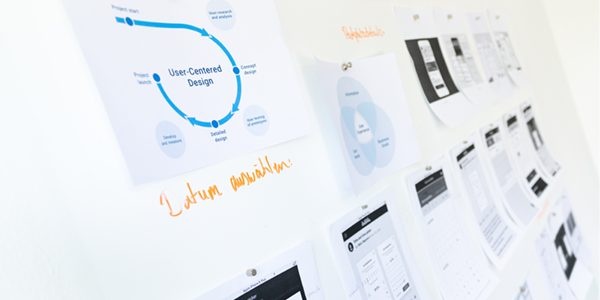
UX newsletter — December 2018

Email not displaying correctly? View it in your browser.
Message from the Editor
Hi {!email}
It feels like it occupied most of 2018, but Philip Hodgson and I have finally completed our book, Think Like a UX Researcher. We had an army of UX researchers cheering us on from the sidelines and helping us make decisions on everything from the cover image to the content. As a thank you, we've put together some free bonus content for people who pre-order the book including a 35-minute video and a ready-to-run UX workshop. Please take a look if you have a sec!
Achieving impact as a UX researcher often depends not on the tools you use but on the way you think. This month, I've written about a very specific thinking tool: the 2x2 diagram. I've found that this is a wonderful way to cut through complexity and help development teams focus on the most important dimensions of a problem. I hope you find it useful too.
Since I won't be bothering your inbox again until 2019, I'd like to wish you all the best for Christmas and the new year.
— David Travis
Spend your end-of-year budget surplus with us!
If you're in the happy but slightly awkward position of having money you need to spend before the end of the year, then we can help! We can invoice you now for user experience consulting or training that you take in 2019. Spend your budget surplus on half-a-day's consultancy through to a customised training program for your team. Contact me at david.travis@userfocus.co.uk for more information.

Some of the problems we work on as UX researchers are simple and are easily solved by getting users in front of our product. But other problems can be complex and it's hard to know how to start solving them. In situations like that, a simple 2x2 diagram can cut through the "what ifs", the "how abouts" and the edge cases and provide a simple way of looking at the problem. Here are 10 examples of 2x2 diagrams to simplify UX research discussions. Read the article in full: 10 diagrams to help you think straight about UX Research.

Although designing usable systems requires far more than simply applying guidelines, guidelines can still make a significant contribution to usability by promoting consistency and good practice. This article contains a list of 247 guidelines we use for expert reviews in our consultancy work. You can also download the guidelines as an Excel workbook. Read the article in full: 247 Web Usability Guidelines.
Review of the year
Here's a list of the articles we published in 2018 that you may have missed.
- In January, I wrote The User Researcher's Field Guide to Psychology where I described four fundamental principles from psychology that user researchers should know.
- February's article answered the question What is design ethnography? The short answer: it's invaluable for those situations where users don't know, don't care or can't articulate what they need.
- In March, I looked at some quotations from Steve Jobs, design communicator extraodinaire, in Steve Jobs on 6 key principles of user experience.
- In April, I wrote why engaging a representative sample of participants in user research is a flawed idea in Why you don't need a representative sample in your user research.
- A Masters in UX costs over £10k and may not make you more employable or attract a higher salary compared with spending the same time gaining practical experience in UX. So in May I asked, Do I need a Masters in User Experience?
- As the weather warmed up in June, I described How to spend your first month in a UX research role (and stay friends with your new work colleagues).
- In much of 2018, we were all busy playing Whack-A-Mole with GDPR emails. So in July, I showed how GDPR had a positive effect on our research practice in Anatomy of a user research consent form.
- August's article was all about demonstrating your value in How to create a POWERful case study for your UX portfolio.
- In September, I looked at creating better survyes in an article titled Using the cognitive interview to improve your survey questions.
- In October, I argued that UX researchers are really storytellers in Storytelling in UX research.
- And last month, Philip Hodgson contributed an article on shifting your perspective to get a better look at the people you're designing for. His article was titled See different.
I hope you stay with us for another 12 months of wittering!
What we’re reading

Some interesting UX-related articles that got our attention over the last month:
- Presenting UX Research Findings Using the Jobs to Be Done Framework.
- Usability Testing Of Mobile Applications: A Step-By-Step Guide.
- Stop talking about empathy.
- Kudos to Jared Spool for making his top talks freely available.
- An Eclectic List of UX Resources.
- 3 Pro Tips on Alignment in UI Design.
Like these? Want more? View our posts on Twitter or Facebook.
Upcoming UX training courses

In this fun and hands-on training course, you'll practice all the key areas of UX — from interviewing your users through to prototyping and usability testing your designs — while you prepare for and take the BCS Foundation Certificate exam. View the full syllabus: Foundation Certificate in User Experience.
A 5-day immersion seminar that shows you how Government Digital Services (GDS) plan and carry out user research within Government. You'll practice interviewing and contextual research, carry out usability testing, explore the bigger picture of assisted digital and discover how to plan user research on agile projects. View the full syllabus: User Research Fundamentals.
UX quotation of the month
"The beginning is the most important part of the work." — Plato.
Did I mention I'm writing a book?
It's titled Think Like a UX Researcher and you can get free bonus content if you pre-order.
Hungry for more?
Read previous newsletters.
Want to receive your own copy of this newsletter?
Join our community of people interested in user experience. Sent monthly. No spam.
|